 Open Access
Open Access
ARTICLE
Hybrid Dynamic Optimization for Multilevel Security System in Disseminating Confidential Information
1 School of Computer Science, University of Petroleum and Energy Studies, Dehradun, 248007, India
2 Department of Computer Science, Graphic Era Hill University, Dehradun, Uttarakhand, 248001, India
3 Department of Computer Engineering and Applications, GLA University, Mathura, India
4 Faculty of Computers and Information, South Valley University, Qena, 83523, Egypt
5 Electrical Engineering Department, College of Engineering, King Khalid University, Abha, 62529, Saudi Arabia
6 Electrical Engineering Department, Faculty of Engineering, Aswan University, Aswan, 81528, Egypt
* Corresponding Author: Hammam Alshazly. Email:
Computer Systems Science and Engineering 2023, 47(3), 3145-3163. https://doi.org/10.32604/csse.2023.041061
Received 09 April 2023; Accepted 12 June 2023; Issue published 09 November 2023
Abstract
Security systems are the need of the hour to protect data from unauthorized access. The dissemination of confidential information over the public network requires a high level of security. The security approach such as steganography ensures confidentiality, authentication, integrity, and non-repudiation. Steganography helps in hiding the secret data inside the cover media so that the attacker can be confused during the transmission process of secret data between sender and receiver. Therefore, we present an efficient hybrid security model that provides multifold security assurance. To this end, a rectified Advanced Encryption Standard (AES) algorithm is proposed to overcome the problems existing in AES such as pattern appearance and high computations. The modified AES is used for the encryption of the stego image that contains the digitally signed encrypted secret data. The enciphering and deciphering of the secret data are done using the Rivest–Shamir–Adleman (RSA) algorithm. The experiments are conducted on the images of the USC-SIPI standard image database. The experimental results prove that the proposed hybrid system outperforms other SOTA (state-of-the-art) approaches.Keywords
Information security plays a substantial role in data communication through a transmission channel (i.e., physical communication or through a network channel). In order to ensure secret communication between the sender and receiver, a secure information dissemination system is the need of the hour as illustrated in Fig. 1. Impregnable communication is indispensable for transmitting data in a public channel. Gradually, the increase in communication infrastructure concerns the high altitude of information security in communication networks [1]. Due to the advancements in information technology, it is easy, fast, and economical to send and receive data over the Internet [2,3]. The most common techniques to safeguard sensitive information are cryptography and steganography [4–6]. The concepts of steganography and cryptography are utilized to ensure confidentiality and authentication but the addition of a digital signature ensures integrity and non-repudiation also. Cryptography is the process of converting plaintext to unintelligible form so that the attacker could not read the transmitted message between sender and receiver [7]. It can be classified into two categories: Symmetric-key cryptography and Asymmetric-key cryptography. In symmetric-key cryptography, only one shared secret key is utilized for both the encryption and decryption process while asymmetric key cryptography employs the public key and private key for enciphering and deciphering secret data.
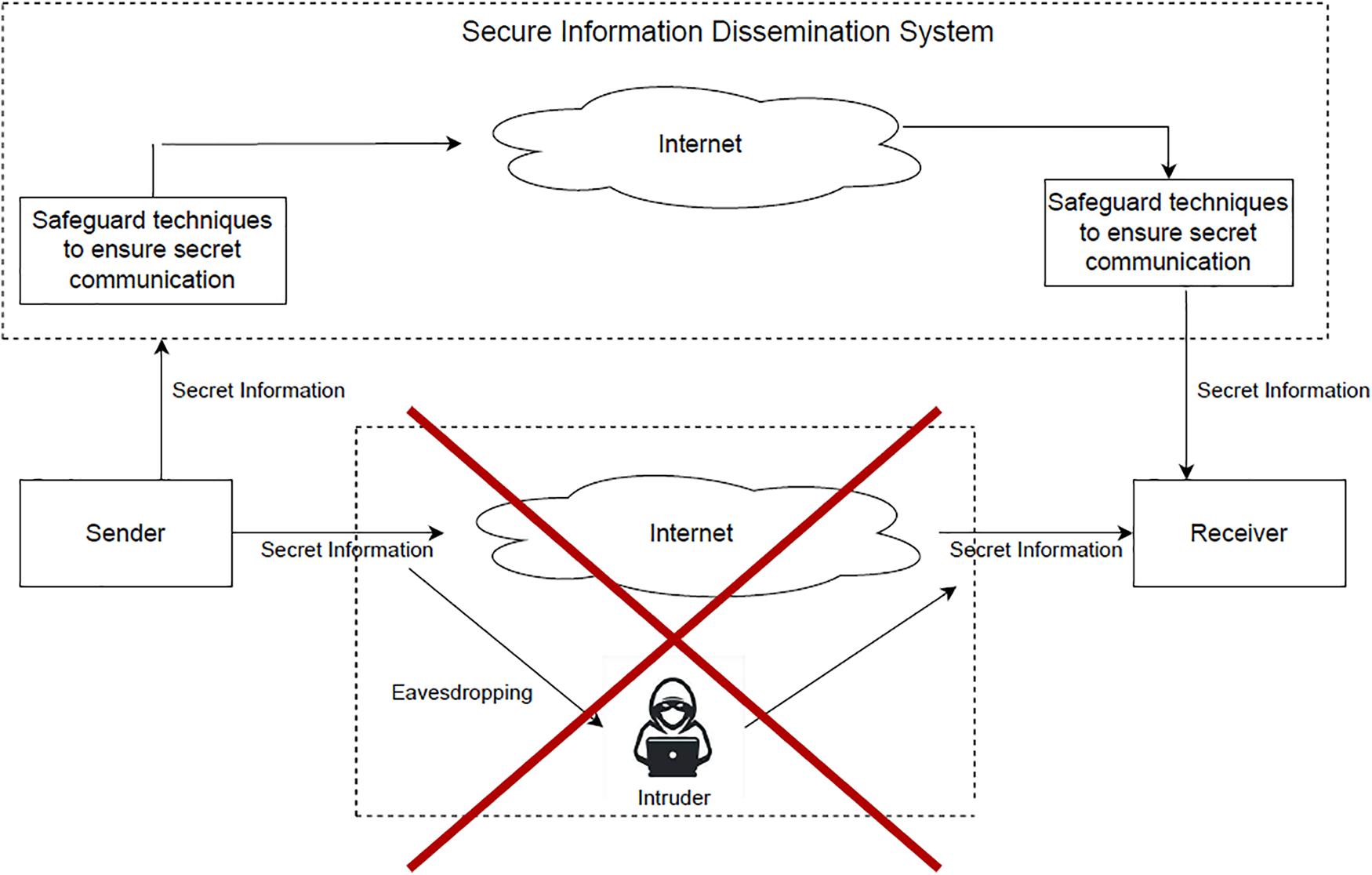
Figure 1: The process flow of the information dissemination system
The term steganography came from the Greek word stegano+graphy means covered writing [8]. It helps to hide secret messages inside any cover media such as images, video, audio, etc. A digital signature encrypts the hash value of the secret message using the private key of the sender which ensures the message is sent by the sender only [9]. The concept of digital signature with cryptography ensures non-repudiation (i.e., the sender cannot deny that the message was sent by him/her), and maintains the integrity of data. Eavesdropping and Man-in-the-middle attacks are the major challenges present in an information dissemination system. It is the biggest myth that only the encryption process is able to secure our data on the network. The required security is achieved through proper access control, ensuring integrity, and data availability [10,11]. Therefore, we propose a hybrid system that grabs the usefulness of the discussed individual security techniques to make an efficacious security system. The proposed research aims to ensure all the security primitives commonly known as the CIA triad (i.e., confidentiality, integrity, and availability), authentication, and non-repudiation [12].
The major contributions of this work are:
• The problem of pattern appearance and high execution time exists in standard AES, therefore, we propose a modified AES that helps to mitigate the existing problems in AES.
• The problem of eavesdropping by the intruder leads to the breach of confidential information, therefore, a novel hybrid system for multilevel security in disseminating secret information is proposed.
• The proposed system ensures all the security requirements such as confidentiality, integrity, availability and non-repudiation.
• Comparative analysis of the performance of standard AES and Rectified AES is done in terms of entropy, correlation coefficient, and execution time.
• The proposed rectified AES achieved a 1.05% improvement in entropy and a 1.25% improvement in execution time in comparison to standard AES.
The structure of the paper is systematized as follows. The first section covers a brief overview of the need for multilevel security and hybrid systems. Section 2 confers the contemporary literature on the tools and techniques used for multilevel security. Section 3 elaborates on the materials and the proposed method to ensure confidentiality, integrity, availability, and non-repudiation. The experimental setup such as system configuration, the programming language for the implementation, the dataset used, the conducted experiments, and the discussion related to the achieved results are discussed in Section 4. Finally, Section 5 concludes the research article and proposes the prospects of the research.
Earlier, individual techniques [13–17] have been utilized to provide data security but now the interest of researchers has been shifted towards hybrid systems. In the contemporary scenario, a greater amount of research work has been done for hybrid security systems to deliver an elevated level of information security [18–23]. Curvelets-based ECG steganography technique was proposed by Jero et al. [24] that embeds the confidential data of patients into their ECG signals. The proposed approach only provides the confidentiality of data but the attacker can replace the embedded data that may lead to an integrity breach. Abbas et al. [25] proposed a hybrid approach to enhance the data security for the cloud. They used the amalgamation of steganography and cryptography to provide high-level cloud security. AES, RSA, Least Significant Bit (LSB), and Lempel-Ziv-Welch (LZW) algorithms are used to achieve all the security primitives. The key feature of their work is that it also provides compression of data that leads to the requirement of less bandwidth at the time of transmission and makes the algorithm faster.
The hybrid system proposed by Jassim et al. [26] utilized steganography and cryptography techniques to embed secret data inside an image. The message is encrypted through the RSA algorithm and occluded inside an image using the LSB steganography technique. The method achieved confidentiality and authentication primitives but the modification in the hidden data can be done by the attacker. Anwarul et al. [27] suggested some modifications in the AES algorithm to overcome the existing problems such as pattern appearance and high computations. The authors used modified AES for the encryption of an image. Further, steganography is employed for hiding the shared secret key of AES in the encrypted image to enhance security. The study projected by Belkaid et al. [28] targeted the protection of medical information available in the form of images. They suggested a hybrid encryption technique to provide security to medical images from illegitimate access to the patient’s data.
The amalgamation of steganography, encryption, and watermarking in a hybrid system was presented by Razzaq et al. [29]. The encryption in the proposed method was done by the secret key generated by shifting the pixel bits using the XOR operator. The steganography and watermarking techniques were used for data hiding and copyright protection, respectively. Alarood et al. [30] suggested an image steganography technique for Internet of Things (IoT) networks. The approach utilized the characteristics of the pixels of the cover image for the embedding process. They classified the highly smooth and less smooth domains to identify the eligible pixels that could include in the embedding phase.
Liao et al. [31] presented a new approach for the steganography of medical images that utilized the dependencies of the inter-block coefficients. The experimental results in the presented paper proved that the steganographic algorithm in [31] is better than other existing steganographic approaches. Denis et al. [32] proposed a hybrid system for the cloud-based healthcare systems consisting of AES and RSA algorithms for the encryption process. They utilized the concept of a genetic algorithm for the pixel adjustment process to enhance the hiding capability of the algorithm. In [32], the authors developed three modules in the presented paper. The encryption process was done using AES and RSA, whereas the hiding of patient’s data in the medical cover image was done using Discrete Wavelet Transform. In addition, they utilized Adaptive Genetic Algorithm in the embedding phase for the pixel adjustment process.
The aspects of security, privacy, trust, and anonymity in DNA computing were discussed in [33]. In order to protect user data, each of them has a specific function. The authors described how DNA computing is used to address these issues. Data encryption and masking are two methods used to achieve data security, where the objectives of data security can vary depending on the type of information being protected. The use of these techniques can help protect sensitive information and control access to it. Kumari et al. [34] discussed community detection algorithms (CDAs) and the issue of community deception in complex industrial networks for privacy reasons. They introduced two methods to conceal nodes from CDAs, using persistence and safeness scores to optimize the problems. The objective functions aim to minimize the persistence score and maximize the safeness score of the nodes, and the simulation results showed the efficacy of the proposed strategies in concealing community information in complex industrial systems.
Niu et al. [35] proposed a solid-state circuits-based communication system that provides high-speed transmission of data. The secure transmission is missing in their research. In the presence of passive and active eavesdropping attacks, Cao et al. [36] examined the security of semi-grant-free Non-orthogonal multiple access transmission. They utilized IoT to reduce access delay and provide massive connectivity in the network. The research proposed by Cao et al. [37] examined the physical layer security of the wireless-powered information dissemination systems by considering the presence of a passive eavesdropper. The results of their research illustrate that low transmission power is required in the proposed system. Gao et al. [38] presented an asynchronous updating Boolean network encryption algorithm based on chaos (ABNEA) to ensure the safe transmission of the network. The algorithm uses a novel 2D chaotic system to generate key streams for encryption and a synchronous scrambling-diffusion method to encrypt the Boolean network matrix. The encoded asynchronous updating Boolean network is converted to a Boolean matrix and propagated on the network as an image. Simulation experiments and security analysis demonstrated the effectiveness of ABNEA in encrypting asynchronously updating Boolean networks and have good security characteristics.
Even though the discussed methods in the literature covered different aspects, they are limited to ensuring confidentiality, integrity, and authentication. Therefore, we proposed a multi-level information dissemination system that ensures all the security primitives such as confidentiality, integrity, availability, authentication, and non-repudiation.
In the proposed system, the encryption and decryption of the secret text are done using the RSA algorithm [39]. The algorithm follows an asymmetric key cryptography approach and works on the fact that the factorization of large integers is difficult. First, two prime numbers are selected, i.e., α and β, where public key and private keys are derived from the selected prime numbers. The second step is to calculate block size (n) and Euler’s totient function (Φ(n)). After getting the values of n and Φ(n), select public key (e) in such a way that the Greatest Common Divisor (GCD) of e and Φ(n) should be equal to 1. The private key (d) is calculated using the public key. The enciphering process is done using the public key (e) to get the ciphertext (Ci) and the deciphering is done using the generated private key (d) to acquire the plaintext (P). The diagrammatic flow of the RSA algorithm is illustrated in Fig. 2.

Figure 2: The overall working of the RSA algorithm
3.2 The Proposed Rectified AES Algorithm
The earlier version of AES consists of 10, 12, or 14 rounds which consist of a 128-bit key in 10 rounds, a 192-bit key in 12 rounds, and a 256-bit key in 14 rounds. Each round consists of four operations such as substitute bytes, mix columns, shift rows, and add round keys [40]. The complete structure of the algorithm is illustrated in Fig. 3. It receives 128-bit plaintext to convert into 128-bit ciphertext. The maximum number of calculations are performed in the mix columns step. The value of each byte of a column is replaced by a new value which is a function of all four bytes in that column. The columns are considered as polynomials over GF(28) and multiplied by a fixed polynomial a(x) modulo x4 + 1 given by Eq. (1).
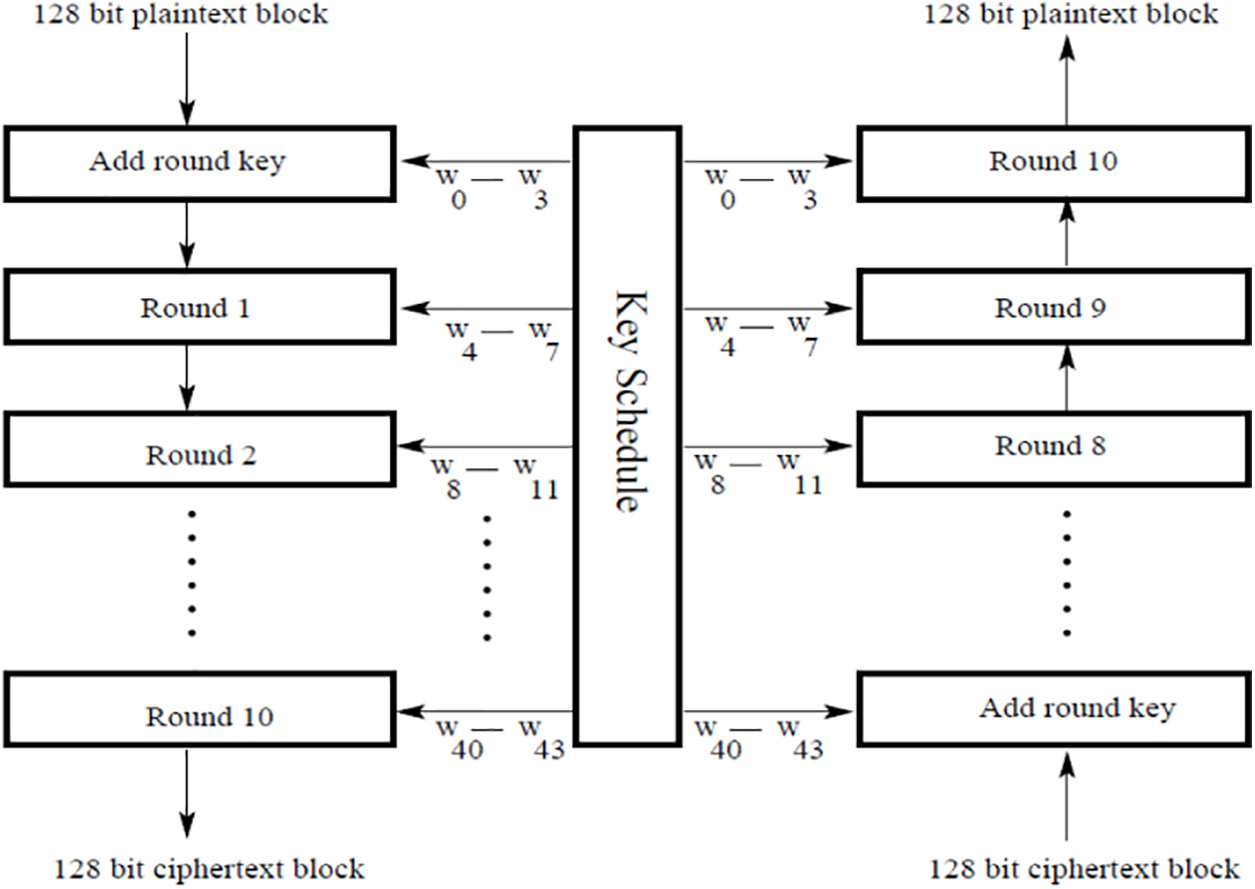
Figure 3: The structure of the AES algorithm
Therefore, we rectified the mix columns step to minimize the number of computations that make the algorithm faster. Mix column step plays a significant role in providing confusion and diffusion to the cipher text, thereby enhancing the security of the encryption process. In the MixColumns step, each column of the 4 × 4 state matrix is transformed using a mathematical function that mixes the bytes of the column. The scrambling step is also added to alleviate the problem of pattern appearance. The scrambling step is done before passing the input to the modified AES by XORing the actual image with the randomly generated matrix. The dimensions of the randomly generated matrix are the same as the dimensions of the input image.
In the substitute bytes step, the substitution of the value of each byte is done using 16 × 16 bytes S-box table which is prepared using the transformation of values in Galois Field (GF(28)). The permutation of the bytes between the columns is done in the second step of each round known as the shift rows step. The mix columns step requires a lot of computations that make the algorithm slow. The modification in this step is done in the same way as the computations are performed in the shift rows step as shown in Fig. 4. The values in the first column remain the same while the bytes of the second column take a one-step cyclic downward shift and so on. At the time of deciphering, the operation is done by shifting upwards cyclically from the second column onwards. This modified step simply permutes the bytes between the rows. The proposed modification reduces the computations but makes the algorithm prone to attacks. To compensate for the generated issue, multilevel security is provided using various security methods. The last step of the algorithm (i.e., add round keys) is utilized by XORing the state array with 128-bit of the expanded key.
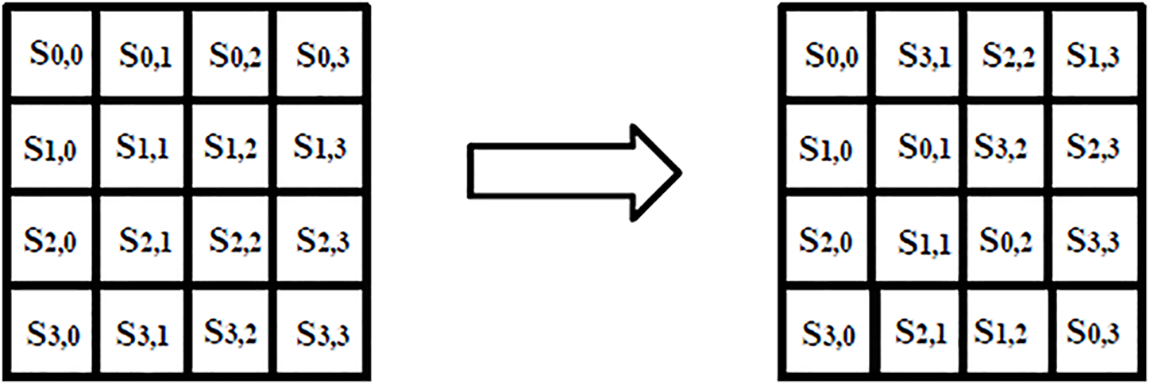
Figure 4: The rectified mix columns step
The purpose of the intended research is to secure text and image data from intruders. The proposed methodology is divided into five modules on the sender side: generation of keys, confidential text encryption/decryption, generation/verification of the digital signature, embedding/fetching of the digitally signed encrypted secret text in the carrier file, and encryption/decryption of the stego image. Similarly, these five modules are repeated in reverse at the receiver side for acquiring the secret data. The complete flow of the suggested system at the sender and recipient sides is illustrated in Figs. 5 and 6, respectively. Algorithm 1 demonstrates the functionality of the proposed system at the sender’s end while the working at the recipient side is discussed in Algorithm 2.
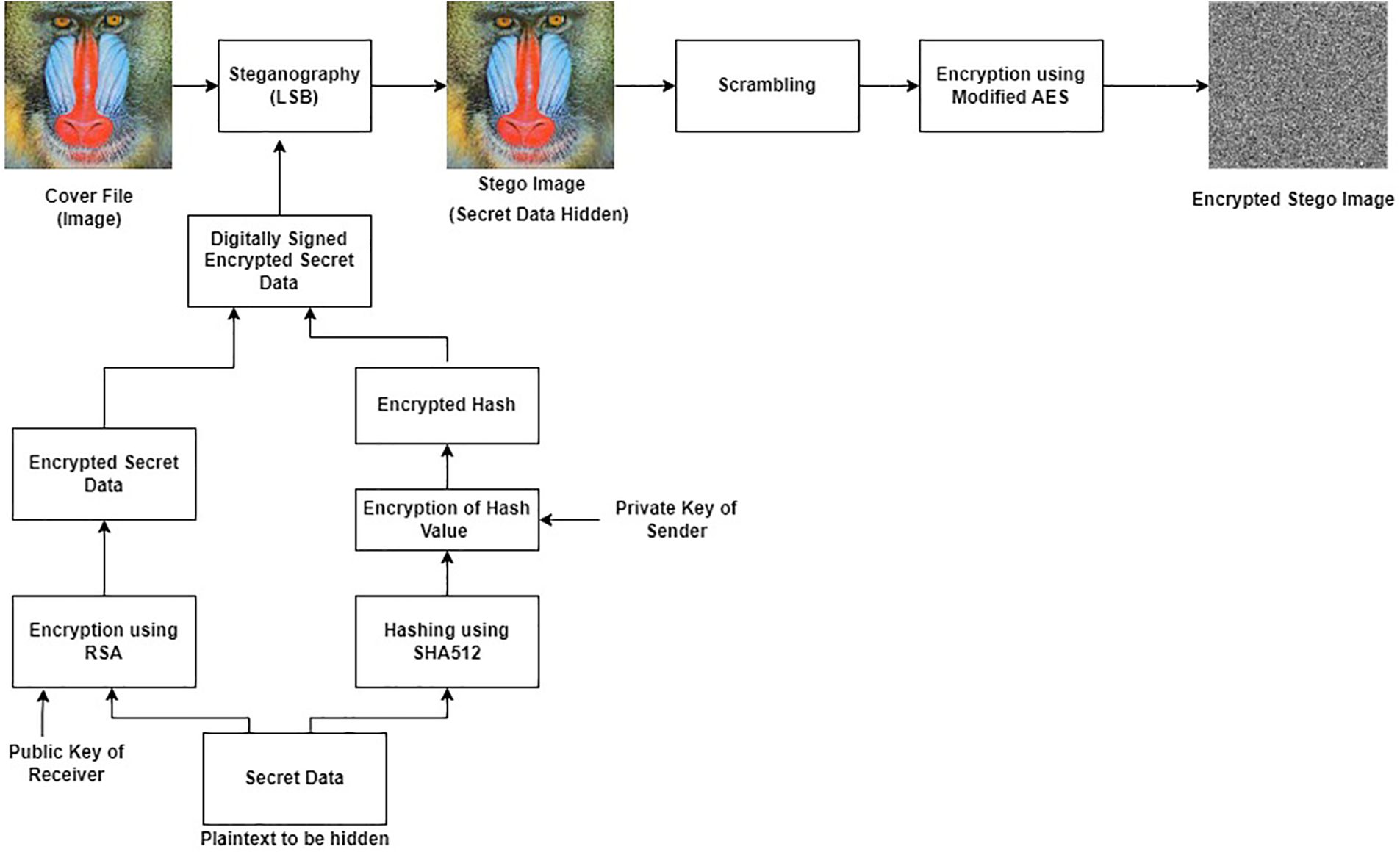
Figure 5: The schematic process flow at the sender side
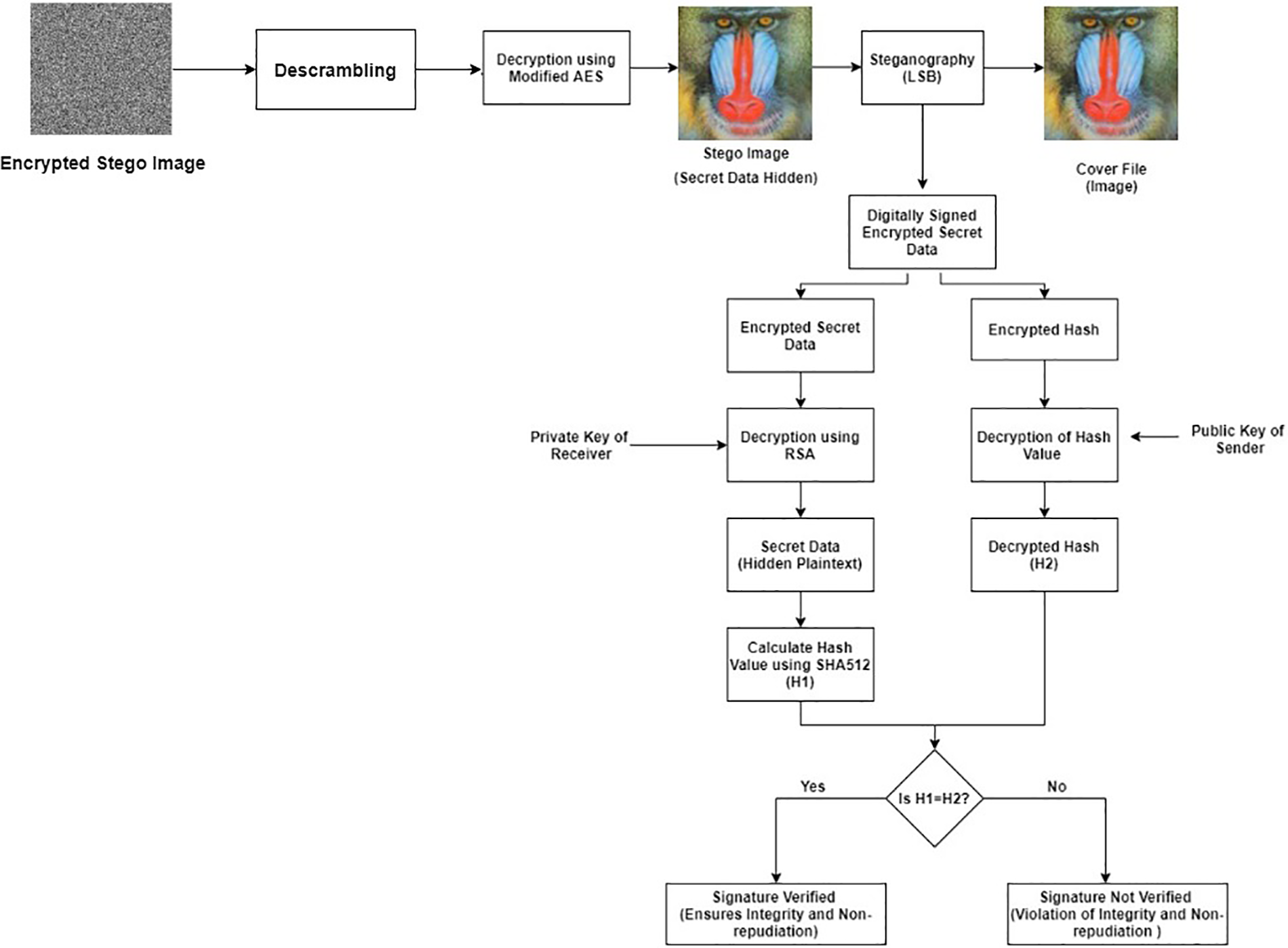
Figure 6: The schematic process flow at the receiver side

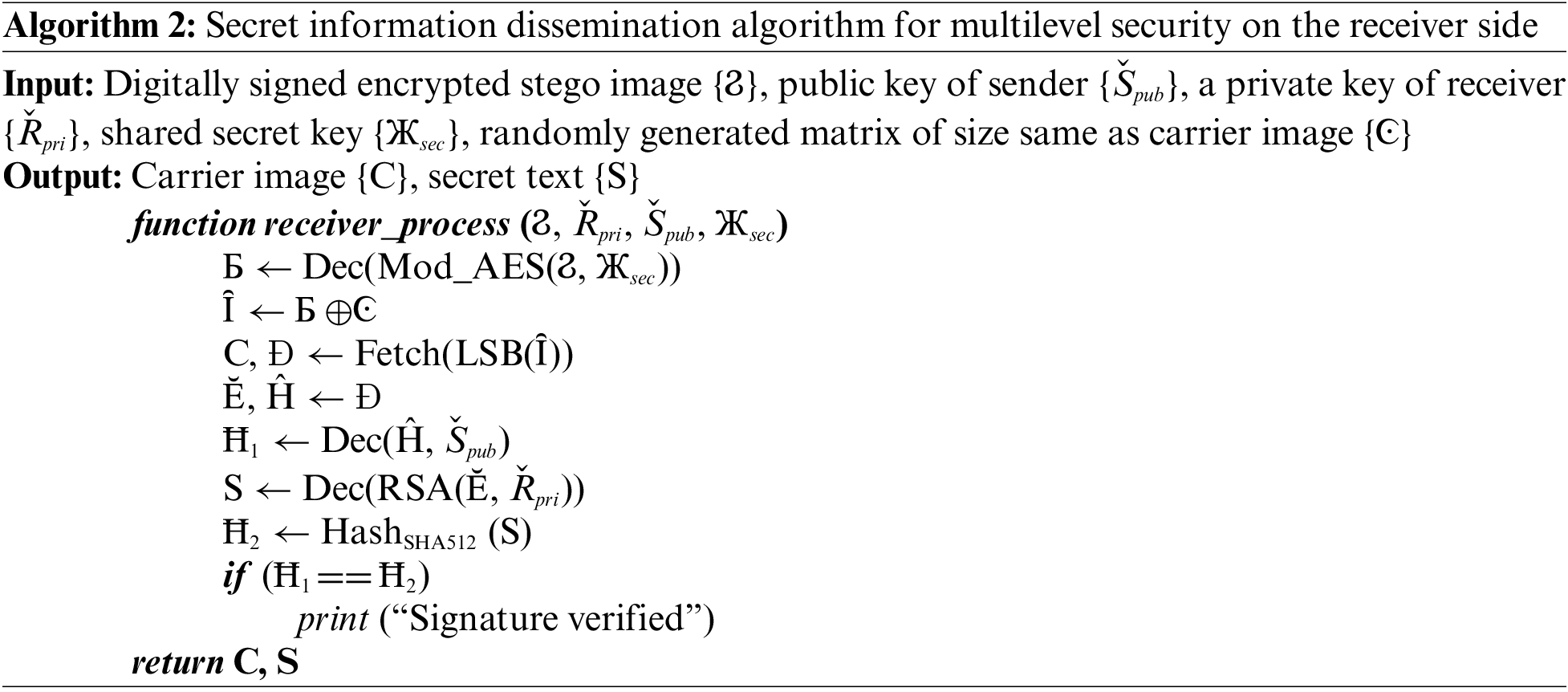
This module consists of the generation of the sender’s private key {Špri}, the receiver’s private key {Řpri}, the sender’s public key {Špub}, and the receiver’s public key {Řpub} for the enciphering and deciphering process using the RSA algorithm. A shared secret key {Жsec} is also generated for the encryption of the stego image using a modified AES algorithm. A secret key {Жsec} is shared with the receiver by embedding it inside the digitally signed encrypted image. The approach of hiding the shared key inside an image for sharing is better than the key sharing using the Diffie-Hellman [41] approach because of the possibility of a Man-in-the-middle-attack [42] in Diffie-Hellman.
3.3.2 Encryption/Decryption of the Confidential Text
The confidential text {S} is encrypted by RSA algorithm {Enc(RSA(S, Řpub)} using a public key of the receiver {Řpub} and utilizing Optimal Asymmetric Encryption Padding (OAEP) [43,44] to accomplish computational security. The decryption of the encrypted secret data {Ĕ} is done at the recipient side using the receiver’s private key {Dec(RSA(Ĕ, Řpri))}.
3.3.3 Generation/Verification of Digital Signature
The digital signature of the sender is generated by encrypting the hash value of the secret text {Ħ1} using SHA512 hashing algorithm {Enc(Ħ1, Špri)} stored in {Ĥ}. The digital signature is done by utilizing the private key of the sender {Špri} that is only known to the sender. The digitally signed encrypted secret text is generated and stored in {Đ}. The verification of the digital signature is done at the receiver side using the public key of the sender {Špub} which ensures non-repudiation. The verification step is done by decrypting the hash value of the received encrypted secret text {Dec(Ĥ, Špub)} stored in {Ħ1} and comparing it with the calculated hash value of the secret text {Ħ2}.
3.3.4 Embedding/Fetching of Encrypted Secret Text in the Carrier File
In this module, the digitally signed encrypted secret data {Đ} is embedded inside the cover image {C} using Least Significant Bit (LSB) steganography technique {Hide(LSB(Đ, C))} to generate stego image {Ȋ}. This step ensures confidential communication between the sender and the recipient. The receiver retrieves the hidden digitally signed encrypted secret message {Fetch(LSB(Ȋ))} from the stego image.
3.3.5 Encryption/Decryption of the Stego Image
After embedding the digitally signed encrypted secret text, the encryption of stego image {Ϩ} is also done to fool the intruder {Enc(Mod_AES(Б, Жsec)} using a shared secret key {Жsec} between the sender and receiver. The attacker will think that the image is encrypted so it would be confidential data but the secret data is hidden behind the image. This module is done to provide multi-level security by encrypting the stego image using a modified AES algorithm. The addition of scrambling of an image using XOR operation with the random matrix of the same size of image is done before employing modified AES to overcome the pattern appearance problem existing in AES {Ȋ⊕Ͼ} and generates scrambled image {Б}. At the receiver side, first, the descrambling process {Б ⊕ Ͼ} is done to get the encrypted stego image. Then, the decryption of the stego image is done using modified AES {Dec(Mod_AES(Ϩ, Жsec))}. After decrypting the stego image, the fetching of digitally signed secret data is made.
This section covers the details of the system configuration, the dataset utilized, the evaluation metrics employed to measure the effectiveness of the proposed research, and the analysis of the results.
All the experiments are conducted to scrutinize the efficacy of the intended system. The configuration of the system comprises Windows10 with AMD Ryzen 5 4600H, Radeon Graphics, and 8 GB RAM. The implementation of the proposed method is accomplished using Python3.
All the experiments are conducted on the images of the USC-SIPI standard image database [45] (https://sipi.usc.edu/database/) and some synthetic images that are publicly available. The dataset consists of 44 images having different sizes such as 256 × 256, 512 × 512, and 1024 × 1024. All the images are in TIFF format. The dataset consists of both grayscale and color images as shown in Fig. 7. The experiments on color images are conducted by converting them into the gray scale image to reduce computational requirements.

Figure 7: The sample images of the USC-SIPI dataset
The proposed research is evaluated based on execution time, entropy, pattern appearance, and correlation coefficient. The term entropy
Here,
Here,
The experimental results are conducted in two stages. First, the rectified AES algorithm is evaluated, and second, the implementation of the proposed system is done. The evaluation of the rectified AES is done based on execution time, entropy, pattern appearance, and correlation coefficient in contrast to the standard AES algorithm shown in Table 1. Then, the comparative discussion of the outcomes of the proposed system with other existing literature is given in Table 2. Fig. 8a illustrates the pattern appearance problem in existing AES and Fig. 8b demonstrates the encryption using modified AES with no pattern appearance. The results in Figs. 8a and 8b are generated by applying standard AES and rectified AES algorithms, respectively for the encryption process.

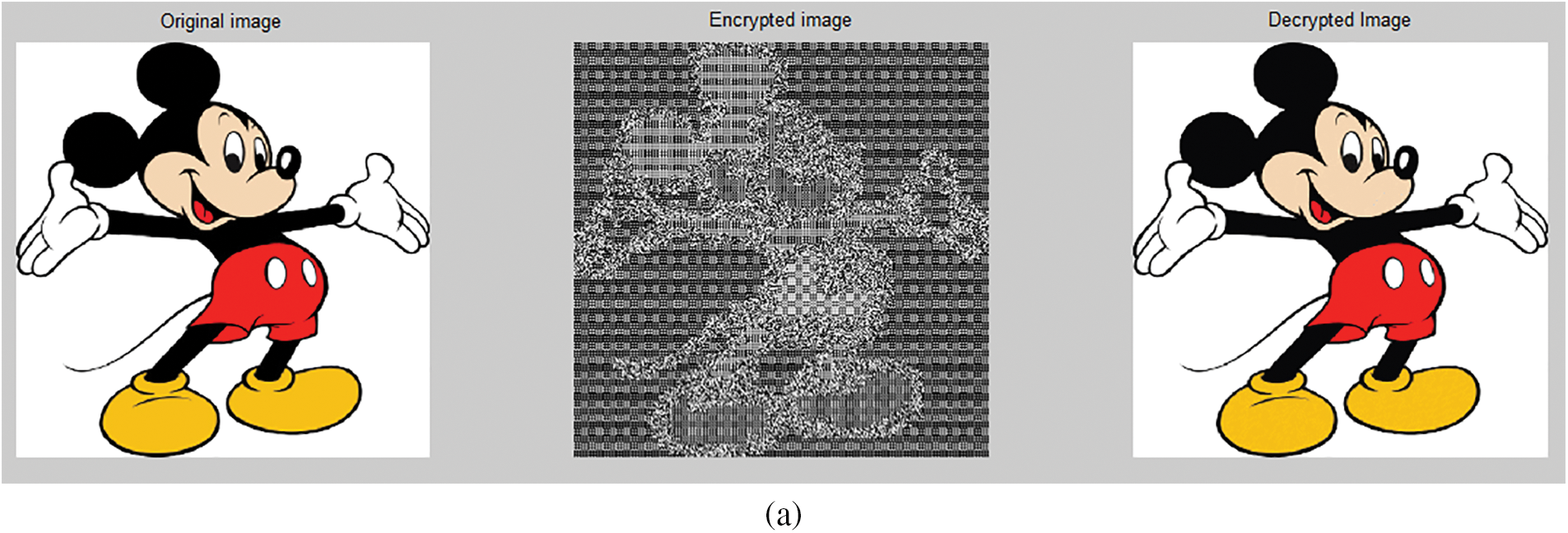

Figure 8: Encryption and decryption (a) using AES (b) using modified AES
Table 1 illustrates the superiority of the rectified AES over the standard AES in terms of entropy, correlation coefficient, and execution time. The last row of Table 1 indicates the average of the results obtained on all the images of the dataset whereas the first four rows show the result on some images of the dataset. The improvement in entropy value of the proposed rectified AES is 1.1%, as well as execution, is approximately two times faster. The correlation value indicates that there is a negligible correlation between original images and encrypted images.
In this section, the experiments are conducted to show the implementation of the proposed system. The private and public keys are generated for the encryption using the RSA algorithm. The encrypted text of the given secret text “My ATM pin is 1234. Keep it secret else it will be misused” is also given in Fig. 9. The hash of the secret message using the SHA512 hashing algorithm and the encrypted hash using the sender’s private key are displayed in Figs. 10 and 11, respectively.

Figure 9: Generation of keys and encrypted secret text

Figure 10: The hash value of secret text

Figure 11: Encrypted hash value
The combination of encrypted secret data and encrypted hash value generates the digitally signed encrypted secret data to be hidden inside the carrier file. This amalgamation guarantees the integrity of data and non-repudiation. The security of the secret text is improved by the use of steganography. The intruder is not able to identify the hidden data inside the cover media as displayed in Figs. 12a and 12b. The size of the resultant image after embedding the secret text is changed as displayed in Fig. 13. Statistical steganalysis is not possible because there is no significant change in the visibility of the histogram of the original image (cover image) and stego image as illustrated in Fig. 14. In Fig. 14, the x-axis represents the different color values, which lie between 0 and 255, and the y-axis represents the number of times a particular intensity value occurs in the image.

Figure 12: Steganography (a) cover image (b) stego image
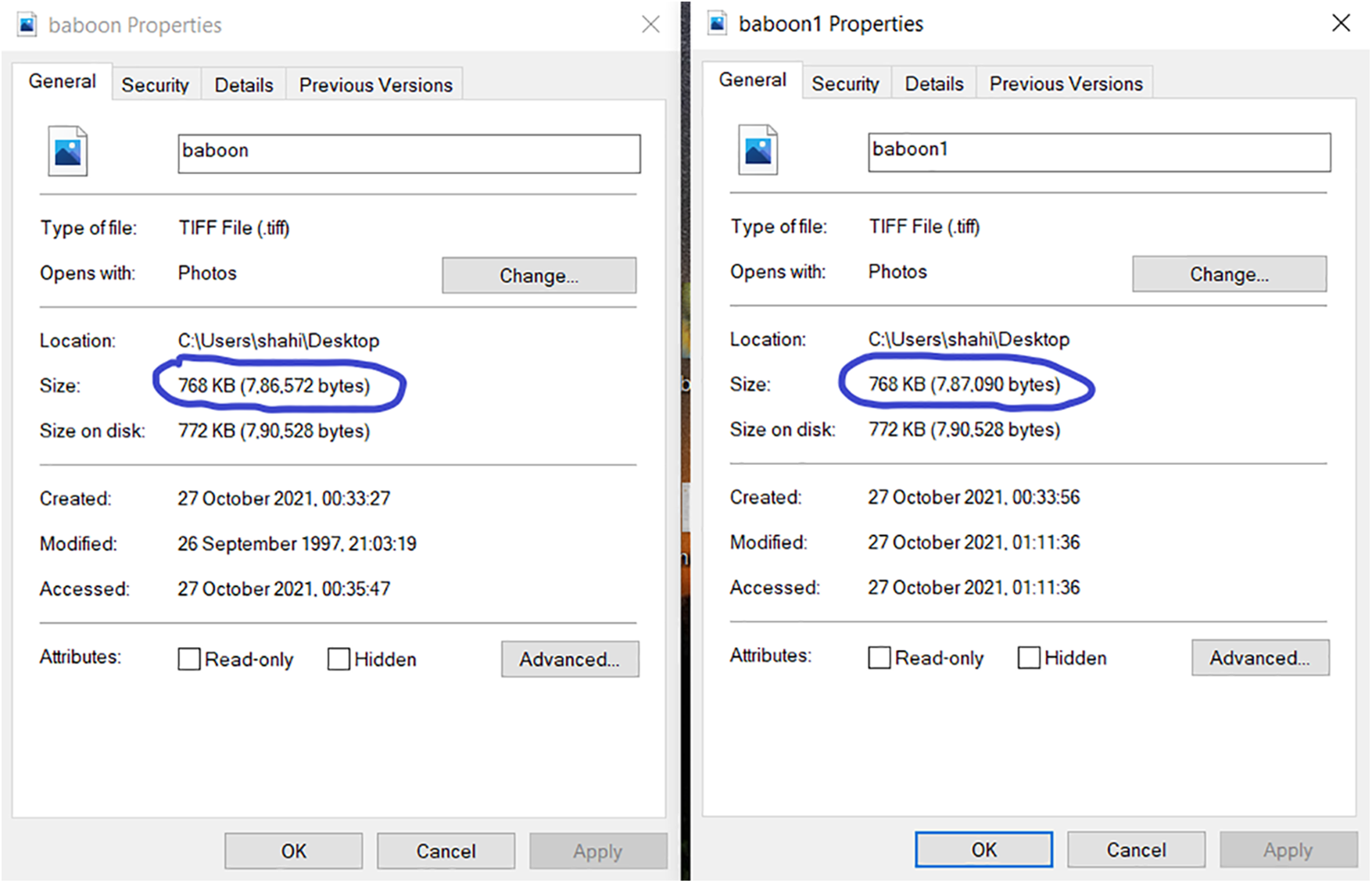
Figure 13: Size of the cover image and stego image
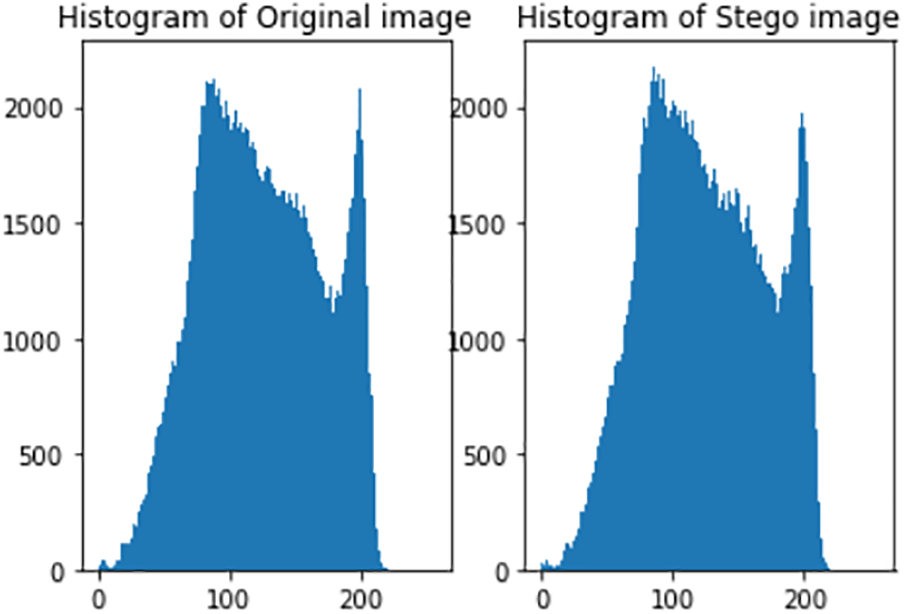
Figure 14: Histogram analysis of cover image and stego image
The fetching of digitally signed encrypted secret text from stego image is done in experiments using the HxD editor. The encrypted secret text and the encrypted hash value start from the character ‘b’ as shown in Fig. 15. The decrypted text from the embedded data is displayed in Fig. 16. The hash value of the received message is decrypted by the sender’s public key and the secret text is decrypted using the recipient’s private key. Then, the hash value of the decrypted secret text is calculated again. If the calculated hash value and the received hash value match, that means the signature is verified and integrity is maintained. The signature verification that ensures non-repudiation is shown in Fig. 17.
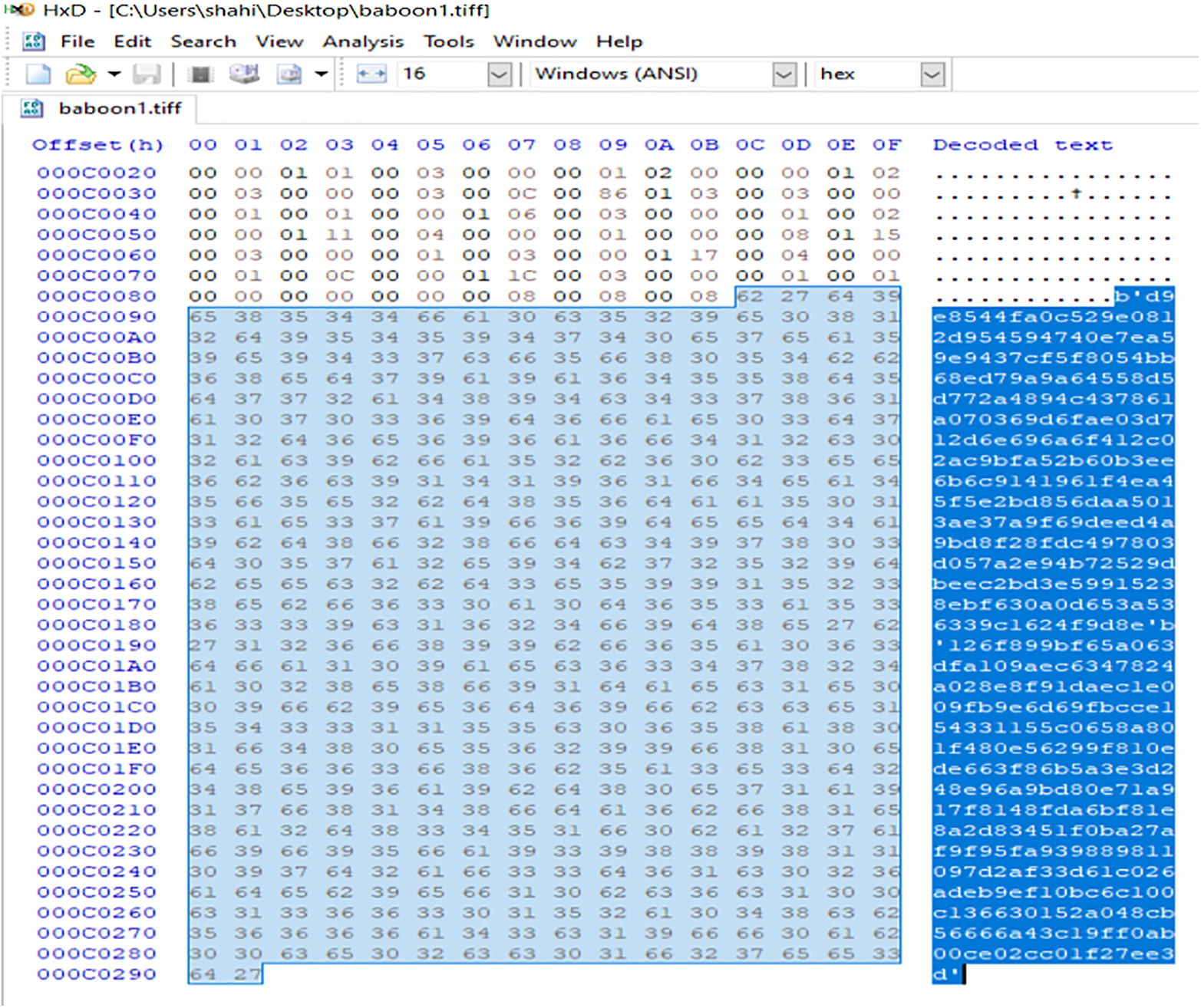
Figure 15: Fetching of embedded digitally signed encrypted secret text

Figure 16: Decryption of embedded digitally signed secret text

Figure 17: Decryption of embedded digitally signed secret text
5 Conclusion and Future Direction
The present work amalgamates cryptography, steganography, and digital signature to ensure confidentiality, integrity, availability, and non-repudiation. We presented an efficient hybrid security model using the RSA and rectified AES algorithms for the encryption of secret text and cover images, respectively. The proposed rectifications in the AES algorithm are successfully verified in terms of achieved entropy values approximately equal to the ideal value (i.e., 8), the low correlation coefficient between the original and encrypted image, and less processing time. The experimental results concluded that the proposed system achieved all the security primitives in comparison to the other existing hybrid systems. The present research can be further extended to providing multilevel security to other mediums also such as audio, video, etc. The compression of the images could also be done as a preprocessing step for the efficient use of bandwidth of the network during the transfer of encrypted images.
Acknowledgement: The authors extend their appreciation to the Deanship of Scientific Research at King Khalid University for funding this work.
Funding Statement: The authors extend their appreciation to the Deanship of Scientific Research at King Khalid University for funding this work through Large Group Research Project under Grant Number RGP2/162/44.
Author Contributions: The authors confirm contribution to the paper as follows: study conception and implementation: Shahina Anwarul, Sunil Kumar; analysis and interpretation of results: Shahina Anwarul, Ashok Bhansali, Hammam Alshazly, Hany S. Hussein; draft manuscript preparation: Shahina Anwarul, Sunil Kumar, Hammam Alshazly. All authors reviewed the results and approved the final version of the manuscript.
Availability of Data and Materials: The data that support the findings of this study are openly available at https://sipi.usc.edu/database.
Conflicts of Interest: The authors declare that they have no conflicts of interest to report regarding the present study.
References
1. W. Stallings, Cryptography and Network Security. Pearson Education India, 2016. [Online]. Available: https://www.amazon.in/Cryptography-Network-Security-Principles-Practice/dp/0134444280 [Google Scholar]
2. L. Yang, Z. Xiong, G. Liu, Y. Hu, X. Zhang et al., “An analytical model of page dissemination for efficient big data transmission of C-ITS,” IEEE Transactions on Intelligent Transportation Systems, vol. 23, no. 9, pp. 16524–16533, 2021. [Google Scholar]
3. Z. G. Xiong, M. Y. Zeng, X. M. Zhang, S. Y. Zhu, F. Xu et al., “Social similarity routing algorithm based on socially aware networks in the big data environment,” Journal of Signal Processing Systems, vol. 94, no. 11, pp. 1253–1267, 2022. [Google Scholar]
4. U. Ogiela, “Cognitive cryptography for data security in cloud computing,” Concurrency and Computation: Practice and Experience, vol. 32, no. 18, pp. e5557, 2020. [Google Scholar]
5. A. M. Qadir and N. Varol, “A review paper on cryptography,” in Proc. of 7th Int. Symp. on Digital Forensics and Security (ISDFS), Barcelos, Portugal, pp. 1–6, 2019. [Google Scholar]
6. S. Dhawan and R. Gupta, “Analysis of various data security techniques of steganography: A survey,” Information Security Journal: A Global Perspective, vol. 30, no. 2, pp. 63–87, 2021. [Google Scholar]
7. B. A. Forouzan and D. Mukhopadhyay, Cryptography and Network Security. Tata McGraw-Hill Education, 2015. [Online]. Available: https://www.amazon.in/Crypt-Network-Security-Forouzan/dp/9339220943 [Google Scholar]
8. M. H. Abood, “An efficient image cryptography using hash-LSB steganography with RC4 and pixel shuffling encryption algorithms,” in Proc. of Annual Conf. on New Trends in Information & Communications Technology Applications (NTICT), Baghdad, Iraq, pp. 86–90, 2017. [Google Scholar]
9. K. Fenrich, “Securing your control system: The “CIA triad” is a widely used benchmark for evaluating information system security effectiveness,” Power Engineering, vol. 112, no. 2, pp. 44–49, 2008. [Google Scholar]
10. G. Liu, “Data collection in MI-assisted wireless powered underground sensor networks: Directions, recent advances, and challenges,” IEEE Communications Magazine, vol. 59, no. 4, pp. 132–138, 2021. [Google Scholar]
11. J. Yu, L. Lu, Y. Chen, Y. Zhu and L. Kong, “An indirect eavesdropping attack of keystrokes on touch screen through acoustic sensing,” IEEE Transactions on Mobile Computing, vol. 20, no. 2, pp. 337–351, 2021. [Google Scholar]
12. I. Bhardwaj, A. Kumar and M. Bansal, “A review on lightweight cryptography algorithms for data security and authentication in IoTs,” in Proc. of 4th IEEE Int. Conf. on Signal Processing, Computing and Control (ISPCC), Solan, India, pp. 504–509, 2017. [Google Scholar]
13. A. Bhardwaj, G. V. B. Subrahmanyam, V. Avasthi and H. Sastry, “Security algorithms for cloud computing,” Procedia Computer Science, vol. 85, pp. 535–542, 2016. [Google Scholar]
14. P. Semwal and M. K. Sharma, “Comparative study of different cryptographic algorithms for data security in cloud computing,” in Proc. of 3rd IEEE Int. Conf. on Advances in Computing, Communication & Automation (ICACCA), Dehradun, India, pp. 1–7, 2017. [Google Scholar]
15. S. Namasudra, P. Roy, B. Balusamy and P. Vijayakumar, “Data accessing based on the popularity value for cloud computing,” in Proc. of Int. Conf. on Innovations in Information, Embedded and Communication Systems (ICIIECS), Coimbatore, India, pp. 1–6, 2017. [Google Scholar]
16. Z. Chen, “Research on internet security situation awareness prediction technology based on improved RBF neural network algorithm,” Journal of Computational and Cognitive Engineering, vol. 1, no. 3, pp. 103–108, 2022. [Google Scholar]
17. R. Verma, A. Kumari, A. Anand and V. S. S. Yadavalli, “Revisiting shift cipher technique for amplified data security,” Journal of Computational and Cognitive Engineering, 2022. https://doi.org/10.47852/bonviewJCCE2202261 [Google Scholar] [CrossRef]
18. S. Gao, R. Wu, X. Wang, J. Wang, Q. Li et al., “A 3D model encryption scheme based on a cascaded chaotic system,” Signal Processing, vol. 202, pp. 108745, 2023. [Google Scholar]
19. S. Gao, R. Wu, X. Wang, J. Liu, Q. Li et al., “EFR-CSTP: Encryption for face recognition based on the chaos and semi-tensor product theory,” Information Sciences, vol. 621, pp. 766–781, 2023. [Google Scholar]
20. A. Wani and R. Khaliq, “SDN-based intrusion detection system for IoT using deep learning classifier (IDSIoT-SDL),” CAAI Transactions on Intelligence Technology, vol. 6, no. 3, pp. 281–290, 2021. [Google Scholar]
21. S. Namasudra, “A secure cryptosystem using DNA cryptography and DNA steganography for the cloud-based IoT infrastructure,” Computers and Electrical Engineering, vol. 104, pp. 108426, 2022. [Google Scholar]
22. A. Gutub, “Boosting image watermarking authenticity spreading secrecy from counting-based secret-sharing,” CAAI Transactions on Intelligence Technology, vol. 8, no. 2, pp. 440–452, 2022. https://doi.org/10.1049/cit2.12093 [Google Scholar] [CrossRef]
23. R. Wu, S. Gao, X. Wang, S. Liu, Q. Li et al., “AEA-NCS: An audio encryption algorithm based on a nested chaotic system,” Chaos, Solitons & Fractals, vol. 165, pp. 112770, 2022. [Google Scholar]
24. S. E. Jero and P. Ramu, “Curvelets-based ECG steganography for data security,” Electronics Letters, vol. 52, no. 4, pp. 283–285, 2016. [Google Scholar]
25. M. S. Abbas, S. S. Mahdi and S. A. Hussien, “Security improvement of cloud data using hybrid cryptography and steganography,” in Proc. of IEEE Int. Conf. on Computer Science and Software Engineering (CSASE), Duhok, Iraq, pp. 123–127, 2020. [Google Scholar]
26. K. N. Jassim, A. K. Nsaif, A. K. Nseaf, B. Priambodo, E. Naf’an et al., “Hybrid cryptography and steganography method to embed encrypted text message within image,” Journal of Physics: Conference Series, vol. 1339, no. 1, pp. 012061, 2019. [Google Scholar]
27. S. Anwarul and S. Agarwal, “Image enciphering using modified AES with secure key transmission,” in Proc. of the Int. Conf. on Communication and Computing Systems (ICCCS), Gurgaon, India, pp. 137, 2017. [Google Scholar]
28. B. M. Belkaid, L. Mourad, C. Mehdi and A. Soltane, “Secure transfer of medical images using hybrid encryption: Authentication, confidentiality, integrity,” in Proc. of IEEE Int. Conf. on Computer Vision and Image Analysis Applications, Sousse, Tunisia, pp. 1–6, 2015. [Google Scholar]
29. M. A. Razzaq, R. A. Shaikh, M. A. Baig and A. A. Memon, “Digital image security: Fusion of encryption, steganography and watermarking,” International Journal of Advanced Computer Science and Applications (IJACSA), vol. 8, no. 5, pp. 224–228, 2017. [Google Scholar]
30. A. Alarood, N. Ababneh, M. Al-Khasawneh, M. Rawashdeh and M. Al-Omari, “IoTSteg: Ensuring privacy and authenticity in internet of things networks using weighted pixels classification based image steganography,” Cluster Computing, vol. 25, no. 3, pp. 1–12, 2022. [Google Scholar]
31. X. Liao, J. Yin, S. Guo, X. Li and A. K. Sangaiah, “Medical JPEG image steganography based on preserving inter-block dependencies,” Computers & Electrical Engineering, vol. 67, pp. 320–329, 2018. [Google Scholar]
32. R. Denis and P. Madhubala, “Hybrid data encryption model integrating multi-objective adaptive genetic algorithm for secure medical data communication over cloud-based healthcare systems,” Multimedia Tools and Applications, vol. 80, no. 14, pp. 21165–21202, 2021. [Google Scholar]
33. S. Namasudra, D. Devi, S. Choudhary, R. Patan and S. Kallam, “Security, privacy, trust, and anonymity,” in Advances of DNA Computing in Cryptography. Florida, USA: Chapman and Hall/CRC, pp. 138–150, 2018. [Google Scholar]
34. S. Kumari, R. J. Yadav, S. Namasudra and C. H. Hsu, “Intelligent deception techniques against adversarial attack on the industrial system,” International Journal of Intelligent Systems, vol. 36, no. 5, pp. 2412–2437, 2021. [Google Scholar]
35. Z. Niu, B. Zhang, B. Dai, J. Zhang, F. Shen et al., “220 GHz multi circuit integrated front end based on solid-state circuits for high speed communication system,” Chinese Journal of Electronics, vol. 31, no. 3, pp. 569–580, 2022. [Google Scholar]
36. K. Cao, H. Ding, B. Wang, L. Lv, J. Tian et al., “Enhancing physical layer security for IoT with non-orthogonal multiple access assisted semi-grant-free transmission,” IEEE Internet of Things Journal, vol. 9, no. 24, pp. 24669–24681, 2022. [Google Scholar]
37. K. Cao, H. Ding, W. Li, L. Lv, M. Gao et al., “On the ergodic secrecy capacity of intelligent reflecting surface aided wireless powered communication systems,” IEEE Wireless Communications Letters, vol. 11, no. 11, pp. 2275–2279, 2022. [Google Scholar]
38. S. Gao, R. Wu, X. Wang, J. Liu, Q. Li et al., “Asynchronous updating Boolean network encryption algorithm,” IEEE Transactions on Circuits and Systems for Video Technology, vol. 33, no. 8, pp. 4388–4400, 2023. https://doi.org/10.1109/TCSVT.2023.3237136 [Google Scholar] [CrossRef]
39. E. Milanov, “The RSA algorithm,” RSA Laboratories, 2009. [Online]. Available: https://sites.math.washington.edu/~morrow/336_09/papers/Yevgeny.pdf (accessed on 15/09/2023). [Google Scholar]
40. A. Kak, AES: The Advanced Encryption Standard [Lecture Notes on Computer and Network Security]. Purdue University, 2023. [Online]. Available: https://engineering.purdue.edu/kak/compsec/NewLectures/Lecture8.pdf [Google Scholar]
41. E. Bresson, O. Chevassut and D. Pointcheval, “Dynamic group diffie-hellman key exchange under standard assumptions,” in Proc. of Int. Conf. on the Theory and Applications of Cryptographic Techniques, Amsterdam, The Netherlands, pp. 321–336, 2022. [Google Scholar]
42. S. Gangan, “A review of man-in-the-middle attacks,” Computing Research Repository, arXiv preprint 1504.02115, 2015. [Google Scholar]
43. A. M. Ahmadian and M. Amirmazlaghani, “A novel secret image sharing with steganography scheme utilizing optimal asymmetric encryption padding and information dispersal algorithms,” Signal Processing: Image Communication, vol. 74, pp. 78–88, 2019. [Google Scholar]
44. M. Bellare and P. Rogaway, “Optimal asymmetric encryption,” in Proc. of Workshop on the Theory and Application of Cryptographic Techniques, Perugia, Italy, pp. 92–111, 1994. [Google Scholar]
45. A. G. Weber, “The USC-SIPI image database version 5,” USC-SIPI Report, vol. 315, no. 1, pp. 1–24, 1997. [Google Scholar]
46. M. Guclu, “Multi-level security model developed to provide data privacy in distributed database systems,” Tehnički Vjesnik, vol. 29, no. 2, pp. 369–378, 2022. [Google Scholar]
47. P. Bharathi, G. Annam, J. B. Kandi, V. K. Duggana and T. Anjali, “Secure file storage using hybrid cryptography,” in Proc. of 6th Int. Conf. on Communication and Electronics Systems (ICCES), Coimbatre, India, pp. 1–6, 2021. [Google Scholar]
48. A. Hambouz, Y. Shaheen, A. Manna, M. Al-Fayoumi and S. Tedmori, “Achieving data integrity and confidentiality using image steganography and hashing techniques,” in Proc. of 2nd Int. Conf. on New Trends in Computing Sciences (ICTCS), Amman, Jordan, pp. 1–6, 2019. [Google Scholar]
49. C. Biswas, U. D. Gupta and M. M. Haque, “An efficient algorithm for confidentiality, integrity and authentication using hybrid cryptography and steganography,” in Proc. of IEEE Int. Conf. on Electrical, Computer and Communication Engineering (ECCE), Cox’s Bazar, Bangladesh, pp. 1–5, 2019. [Google Scholar]
50. A. Jain and V. Kapoor, “Novel hybrid cryptography for confidentiality, integrity, authentication international,” Journal of Computer Applications, vol. 171, pp. 35–40, 2017. [Google Scholar]
51. R. Kumar and P. R. Murti, “Data security and authentication using steganography,” International Journal of Computer Science and Information Technologies, vol. 2, no. 4, pp. 1453–1456, 2011. [Google Scholar]
Cite This Article
 Copyright © 2023 The Author(s). Published by Tech Science Press.
Copyright © 2023 The Author(s). Published by Tech Science Press.This work is licensed under a Creative Commons Attribution 4.0 International License , which permits unrestricted use, distribution, and reproduction in any medium, provided the original work is properly cited.


 Submit a Paper
Submit a Paper Propose a Special lssue
Propose a Special lssue View Full Text
View Full Text Download PDF
Download PDF
 Downloads
Downloads
 Citation Tools
Citation Tools